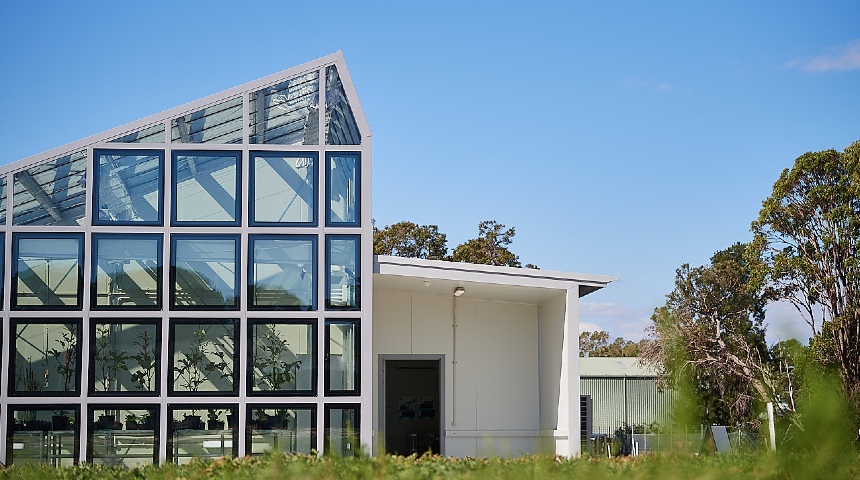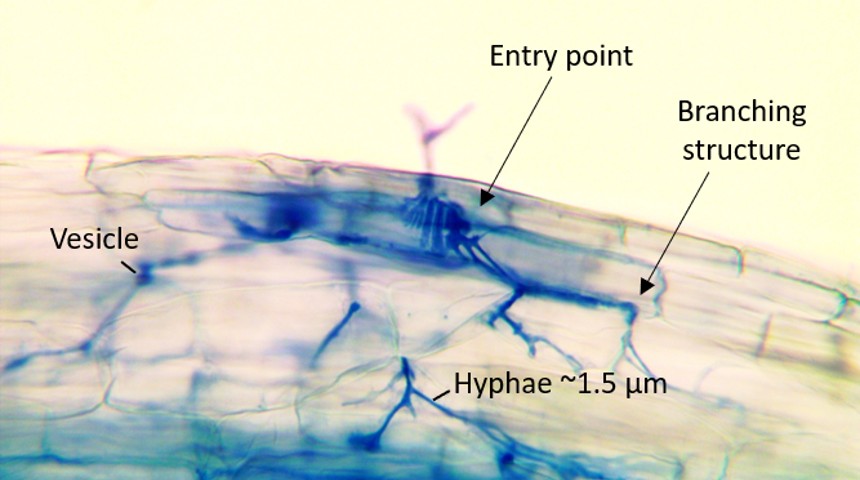
Science has helped us to understand many things, from diseases, to our food, to new technologies.
In the last 300 years, scientists have brought us electricity, vaccines, medicines, modes of transport, electronics, and much more. That’s why we celebrate National Science Week – to reflect, have fun and learn more about science!
During National Science Week 2022, the theme focuses on one of the most fundamental materials of all time. Without it, we wouldn’t have many of our electronics, be protected when travelling, and many of us wouldn’t be able to see. Have you guessed what it is? That’s right, it’s glass!
We have become so used to seeing glass that we take for granted all the wonderful ways it helps us in everyday life.
Studying glasshouses at Murdoch University
Tom Mansfield, PhD Candidate at the Harry Butler Institute, has conducted two research projects studying the fungi growing in plant roots inside glasshouses.
“Glasshouses are built especially for plants due to the large amounts of sunlight they allow in and the control they allow us during research."
“I found thousands of fungi species in my research after extracting the DNA from the roots of the plants, and then studied them under a microscope to see which were more or less present.”
 Tom Mansfield research into fungi within host plants roots, visible under a microscope due to blue dye
Tom Mansfield research into fungi within host plants roots, visible under a microscope due to blue dye
Mansfield said his research focuses on what the different species of fungi do and how they interact with the plant.
“For example, we can understand whether a certain fungi is more stress tolerant in a drought and what nutrients the fungi supplies to the host plant.”
How is Murdoch celebrating National Science Week?
Throughout the year, our Outreach teams visit high schools across the state to teach them about the different courses and opportunities at Murdoch. But, during National Science Week and the entirety of August, they test their science knowledge and offer a chance to win some prizes!
Keal Byrne, Murdoch University Outreach Officer, said the quiz has been very successful and it is only in its second year.
“This is the second year that Murdoch University has run the Scintillating Science Quiz as part of our National Science Week festivities," he said.
"In 2021, we launched the quiz with 3200 Year 9 and 10 students participating at 27 schools across metro Perth and regional WA. This year we have grown to over 3800 participants taking part in the quiz."Keal Byrne, Murdoch University Outreach Officer
The prize? Great question!
One metropolitan school and one regional school with the highest average score will win $500 to put towards visiting Murdoch University for a full day excursion.
Byrne said high schoolers enjoy getting involved in the quiz and competing against fellow classmates.
“The students get extremely competitive against each other! When hosting a quiz, I enjoy seeing a lot of banter back and forth between students. That said, the students also aren’t shy about calling us out when they think a tricky question is particularly unfair!”
Not only that, but in 2022 the Outreach team launched a new learning activity with high schoolers called the Biokemon Challenge. This August, we’re expecting to announce the four student winners of the challenge.
The idea of the challenge is to help students make breakthroughs in ecology. Students pick an ecosystem with their class and then choose an organism to create in the aesthetic of a Pokemon card. They bring all their cards together to then map out an ecosystem and submit their work to enter in the prizes.
There are four individual student winners and two class winners across the state, which we are planning to announce soon.